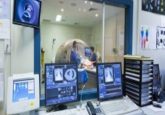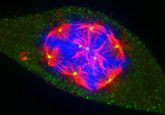New optical device may improve skin cancer diagnostics
New 3-in-1 optical device may reduce number of unnecessary diagnostic biopsies in skin cancer diagnosis.
Researchers in the Cockrell School of Engineering at The University of Texas at Austin (TX, USA) have designed an optical device that may reduce the number of unnecessary biopsies by offering a fast, comprehensive, noninvasive and lower-cost solution to detect melanoma and other skin cancer lesions.
The researchers have postulated that the new device may detect cancerous skin lesions early on and, as a result, lead to better treatment outcomes.
The team have developed a probe that combines three unique ways of using light to measure the properties of skin tissue (Raman spectroscopy, diffuse reflectance spectroscopy and laser-induced fluorescence spectroscopy) and have begun testing their three-in-one device in clinical trials.
As normal skin becomes cancerous, cell nuclei enlarge, top layers of skin can thicken and the skin cells can increase their consumption of oxygen, changing the way light interacts with the tissue. The detection of all these changes requires multiple spectroscopic techniques.
Previous research has attempted to combine spectroscopic techniques to aid skin cancer detection; however this team, lead by James Tunnell (University of Texas), are the first to put three techniques in a single probe that would be inexpensive enough to be used in the wider clinical community.
Currently, the only definitive way to diagnose skin cancer is by carrying out a biopsy; however, determining which lesions to biopsy is complex and there are approximately 25 negative biopsies performed for every case of skin cancer detected. Tunnell and the team believe that the new probe developed by his team could eventually help reduce the high number and cost of negative biopsies by giving a clear picture of which skin lesions are most likely cancerous.
The probe is approximtely the size of a pen, with the spectroscopic and computer equipment fitting neatly onto a portable utility and each reading takes about 4.5 seconds to perform. “This probe, which is able to combine all three spectral modalities, is the next critical step to translating spectroscopic technology to the clinic,” Tunnell stated.




